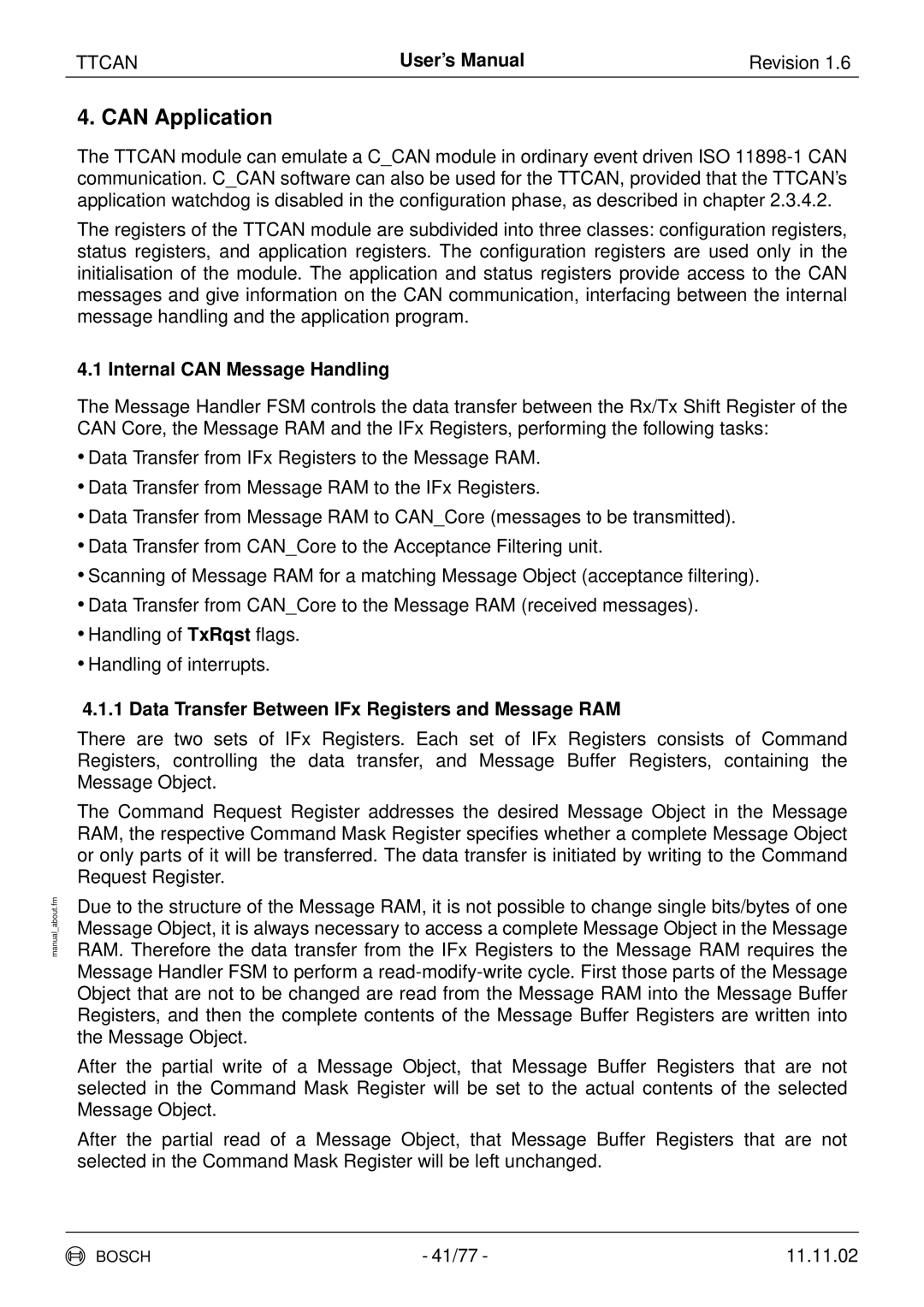TTCAN | User’s Manual | Revision 1.6 |
manual_about.fm
4. CAN Application
The TTCAN module can emulate a C_CAN module in ordinary event driven ISO
The registers of the TTCAN module are subdivided into three classes: configuration registers, status registers, and application registers. The configuration registers are used only in the initialisation of the module. The application and status registers provide access to the CAN messages and give information on the CAN communication, interfacing between the internal message handling and the application program.
4.1 Internal CAN Message Handling
The Message Handler FSM controls the data transfer between the Rx/Tx Shift Register of the CAN Core, the Message RAM and the IFx Registers, performing the following tasks:
•Data Transfer from IFx Registers to the Message RAM.
•Data Transfer from Message RAM to the IFx Registers.
•Data Transfer from Message RAM to CAN_Core (messages to be transmitted).
•Data Transfer from CAN_Core to the Acceptance Filtering unit.
•Scanning of Message RAM for a matching Message Object (acceptance filtering).
•Data Transfer from CAN_Core to the Message RAM (received messages).
•Handling of TxRqst flags.
•Handling of interrupts.
4.1.1Data Transfer Between IFx Registers and Message RAM
There are two sets of IFx Registers. Each set of IFx Registers consists of Command Registers, controlling the data transfer, and Message Buffer Registers, containing the Message Object.
The Command Request Register addresses the desired Message Object in the Message RAM, the respective Command Mask Register specifies whether a complete Message Object or only parts of it will be transferred. The data transfer is initiated by writing to the Command Request Register.
Due to the structure of the Message RAM, it is not possible to change single bits/bytes of one Message Object, it is always necessary to access a complete Message Object in the Message RAM. Therefore the data transfer from the IFx Registers to the Message RAM requires the Message Handler FSM to perform a
After the partial write of a Message Object, that Message Buffer Registers that are not selected in the Command Mask Register will be set to the actual contents of the selected Message Object.
After the partial read of a Message Object, that Message Buffer Registers that are not selected in the Command Mask Register will be left unchanged.
BOSCH | - 41/77 - | 11.11.02 |
